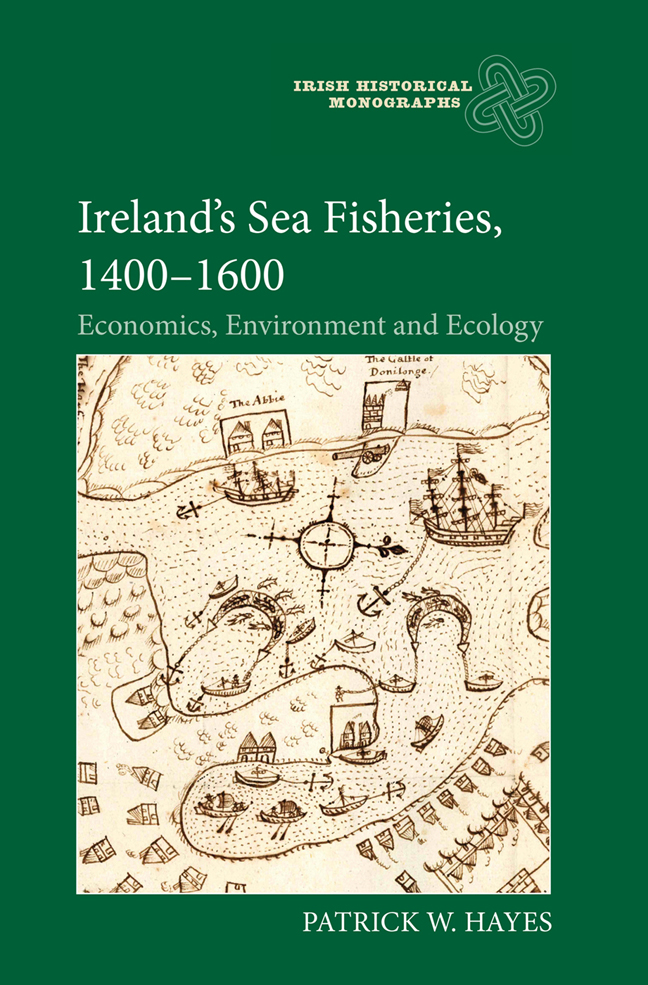Book contents
- Frontmatter
- Dedication
- Contents
- List of Illustrations
- Acknowledgements
- Abbreviations
- Glossary of Fish Species
- Introduction
- 1 The Development of Fisheries, 1400–1500
- 2 Diversity and Cooperation in Sixteenth-Century Fisheries
- 3 The Fish Trade
- 4 The Impact of War and Piracy
- 5 Fish Consumption and Provisioning
- 6 Oceanographic Variation and Environmental Change
- Conclusion
- Appendices
- Bibliography
- Index
- Miscellaneous Endmatter
2 - Diversity and Cooperation in Sixteenth-Century Fisheries
Published online by Cambridge University Press: 22 February 2024
- Frontmatter
- Dedication
- Contents
- List of Illustrations
- Acknowledgements
- Abbreviations
- Glossary of Fish Species
- Introduction
- 1 The Development of Fisheries, 1400–1500
- 2 Diversity and Cooperation in Sixteenth-Century Fisheries
- 3 The Fish Trade
- 4 The Impact of War and Piracy
- 5 Fish Consumption and Provisioning
- 6 Oceanographic Variation and Environmental Change
- Conclusion
- Appendices
- Bibliography
- Index
- Miscellaneous Endmatter
Summary
Gathered about his soft locks are the heroes of the Tuatha, the warriors of Fanad, the kingly youth of Inishowen, delightful hosts from whom the sea is easy to fish.
Tadhg Dall Ó Huiginn, The Battle of Drumleene (composed between 1550 and 1591)Macro View of Fisheries, 1500–1603
For the sixteenth century at least, it is possible to explore and answer many of the fundamental questions about fisheries. For example, where they operated, where fishers came from, how large the fisheries were, what species were caught and what methods were used to do the catching. Answering these basic questions is vital to understanding the diverse and distinctive nature of Irish fisheries in the sixteenth century. Furthermore, in the answers to these questions lie many of the factors that contributed to the economic significance of the industry and its ultimate decline by the end of the sixteenth century.
One of the most fundamental questions we can answer about fisheries around Ireland during the sixteenth century is where they took place. To this end, Map 2.1 shows the site of every fishing location mentioned in the sources from 1496 to 1603. Written accounts that explicitly discussed the location of fishing sites or fishing towns and centres were analysed to generate this map. These sites do not, therefore, in every case represent the exact location where fish was caught but do indicate the locations around which fisheries were based and where the majority of the catch was landed. For example, we have records that discuss Killybegs hosting a fishery, but it is likely that fishers made catches along the coast in the general vicinity of the town. In this instance, not all catches were made at Killybegs, but it was the central landing point.
The map includes river fisheries and lake fisheries, but the majority of sites recorded are sea fisheries. Table 2.1 also lists the ten most frequently mentioned sea and river fishing sites. Here locations that were very close but had different names have been combined in some cases into one central location. The spatial pattern of these locations fits into the general regions established in the previous chapter. There is a concentration of smaller fishing sites on the east coast between Dublin and Carlingford. On the Ulster coast, the English outpost of Carrickfergus stands out, as does the diverse fishery on the Bann.
- Type
- Chapter
- Information
- Ireland's Sea Fisheries, 1400-1600Economics, Environment and Ecology, pp. 47 - 88Publisher: Boydell & BrewerPrint publication year: 2023



